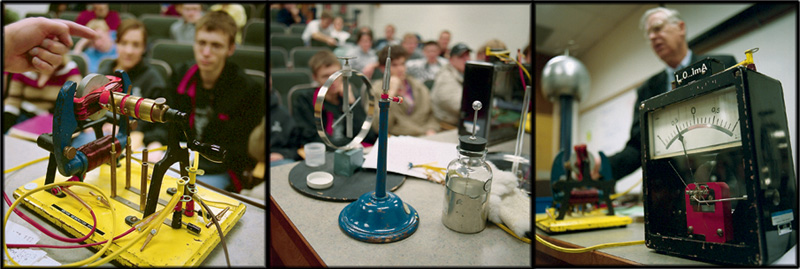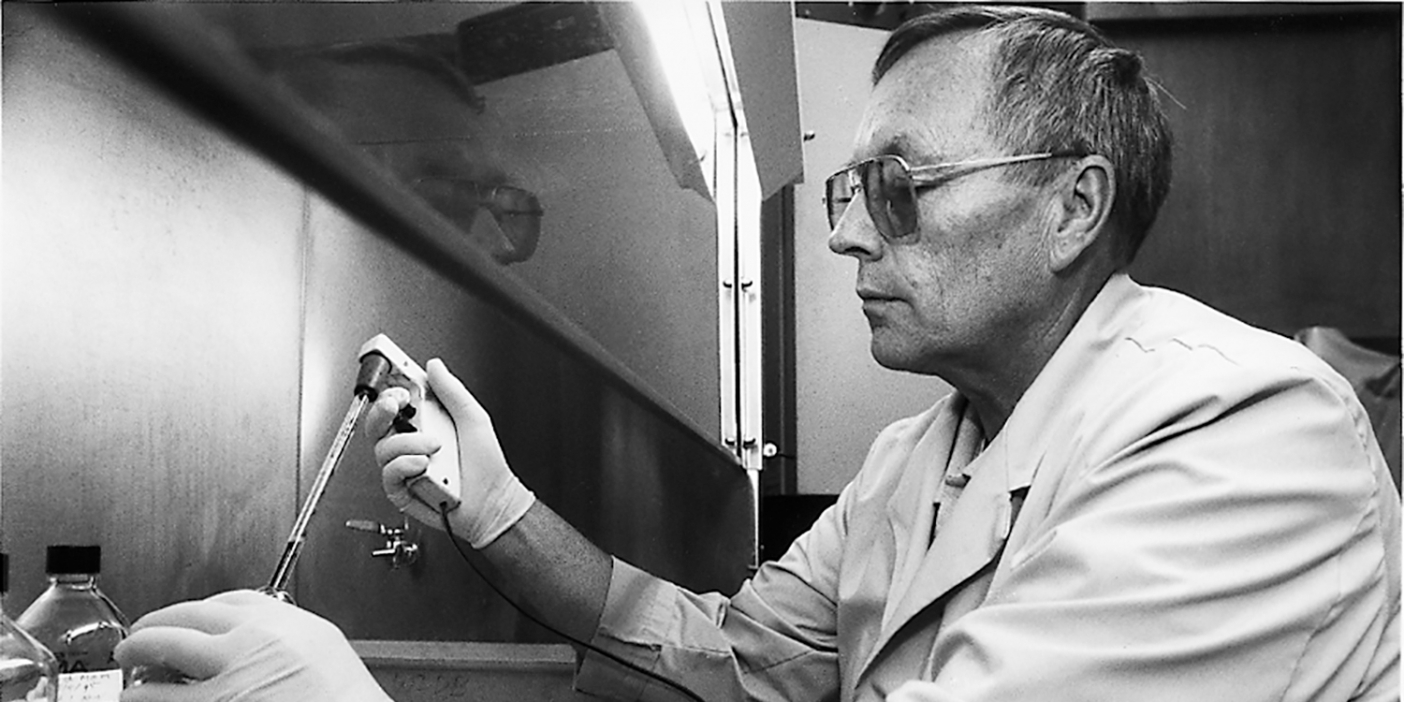By Mary Lynn Bahr
Do the fleas on your cat carry bubonic plague? Do all groups of Bedouin have a common ancestor? How has HIV evolved since it was discovered? And why are there more species of insects than of anything else?
Potential answers for questions like these are found in DNA, the universal genetic blueprint. Seeking such answers, researchers across campus are turning to BYU’s new DNA Sequencing Center, which officially opened in October 1998. The center’s automated sequencing equipment analyzes DNA samples in less time, with fewer errors, and at lower cost than was previously possible. “We’ve got the best sequencing information that’s available right now,” says Michael F. Whiting, who oversees the center.
Whiting, an assistant professor of zoology, mastered automated DNA sequencing while in graduate school and came to BYU in 1997. “One of the conditions for me to come was that the university would provide support for a DNA sequencing center,” he says. “My own research requires a lot of DNA sequencing, and throughout the university a lot of active researchers are doing DNA sequencing on a lot of different projects. It makes sense to have a centralized facility.”
Researchers sequence DNA to discover patterns of nucleotides, the tiny building blocks within a gene. Knowing those sequences helps them distinguish between species, trace breeding patterns, identify genetic mutations, and understand diseases. The results have many potential applications. For example, Keith A. Crandall, assistant professor of zoology, is working with the Utah Division of Wildlife to analyze black bear and cougar populations. Whiting hopes to develop a test that will identify flea species, thus helping to combat flea-borne diseases.
DNA sequencing is not new, but until recently it had to be done manually, using radioactive isotopes. The process is risky, long, and expensive–each manually-produced DNA sequence costs 25 to 50 times as much as one generated by the automated sequencer. And results are sometimes unreliable because the data is interpreted by human eyes.
Automated sequencing is more accurate and six times as fast, but it didn’t catch on instantly. “There’s always a certain inertia to overcome when you shift technologies,” explains Crandall. “But I think that those who have tried it have really found this a far superior way of collecting data. You get more data, you get it faster, you get it better, and you get it safer.”
“We can go from a bug in my hand to a complete DNA sequence in two days,” says Whiting. “Bit by bit, the faculty within the college are going toward automated sequencing. It’s going to end up being a tremendous savings to the university.”
The new automated sequencer processes 64 DNA samples simultaneously. After being tagged with fluorescent dyes, the samples migrate through a polarized gel matrix. A laser at the bottom of the gel excites the dyes, allowing a computer to discern the sequence of nucleotides in each sample.
“It saves that laborious step of reading your sequencing gels and entering that information into a computer,” Whiting explains.
The facility also puts BYU scholars in a more favorable position for receiving research grants. “A number of us have been able to sell our proposals on the fact that we have this technology,” Whiting says.
Sequencing projects currently in process at BYU include Whiting’s work on fleas and other insects; Crandall’s work on cougars, black bears, HIV, and crayfish; Jack W. Sites’ research on coral snakes, lizards, and Amazonian turtles; Scott R. Woodward’s analyses of Egyptian mummies, native Peruvians, Bedouin bloodlines, and Dead Sea Scroll fragments; and other projects from the departments of biochemistry, animal science, and microbiology. Even statistics and computer science professors are becoming involved.
“The sorts of analyses that we’re interested in–figuring out evolutionary relationships, for instance–require a phenomenal amount of computer time,” Whiting explains. “With the sequences I’ve generated on fleas, I can take the fastest supercomputer in the world and require it to spend years and years on this problem, and it still won’t be able to solve it because the problem is so massive. So I’ve been working with Mark Clement and Quinn Snell in computer science, doing parallel computations. Essentially, instead of having just one computer working on the project, we have 100 or 200. So that’s been one of the side effects from the center: not only has it benefited biologists per se, but it’s turned into a very interesting field for statisticians and for computer scientists as well.”
In addition to helping faculty, the new facility provides an important resource for students. “This is the latest and greatest technology in DNA sequencing,” Crandall says. “So without it we’d be doing our students a disservice by not teaching them the latest in what’s out there. We have a number of undergraduates doing research in our lab.”
Located high in the Widtsoe Building, the lab contains no microscopes, test tubes, safety glasses, or chemical smells; DNA samples have already been purified when they arrive for processing. The center sequences 64 samples on an average day, but it could handle two or three times that many–and demand is sure to grow.
“As we’ve had more researchers involved in this, they become more excited by sequencing,” Whiting says. “It’s helping more faculty become more research active, and it’s also allowing students to be involved in doing primary research. It’s been opening new avenues of research at the university because we can do things we’ve never done before.”









